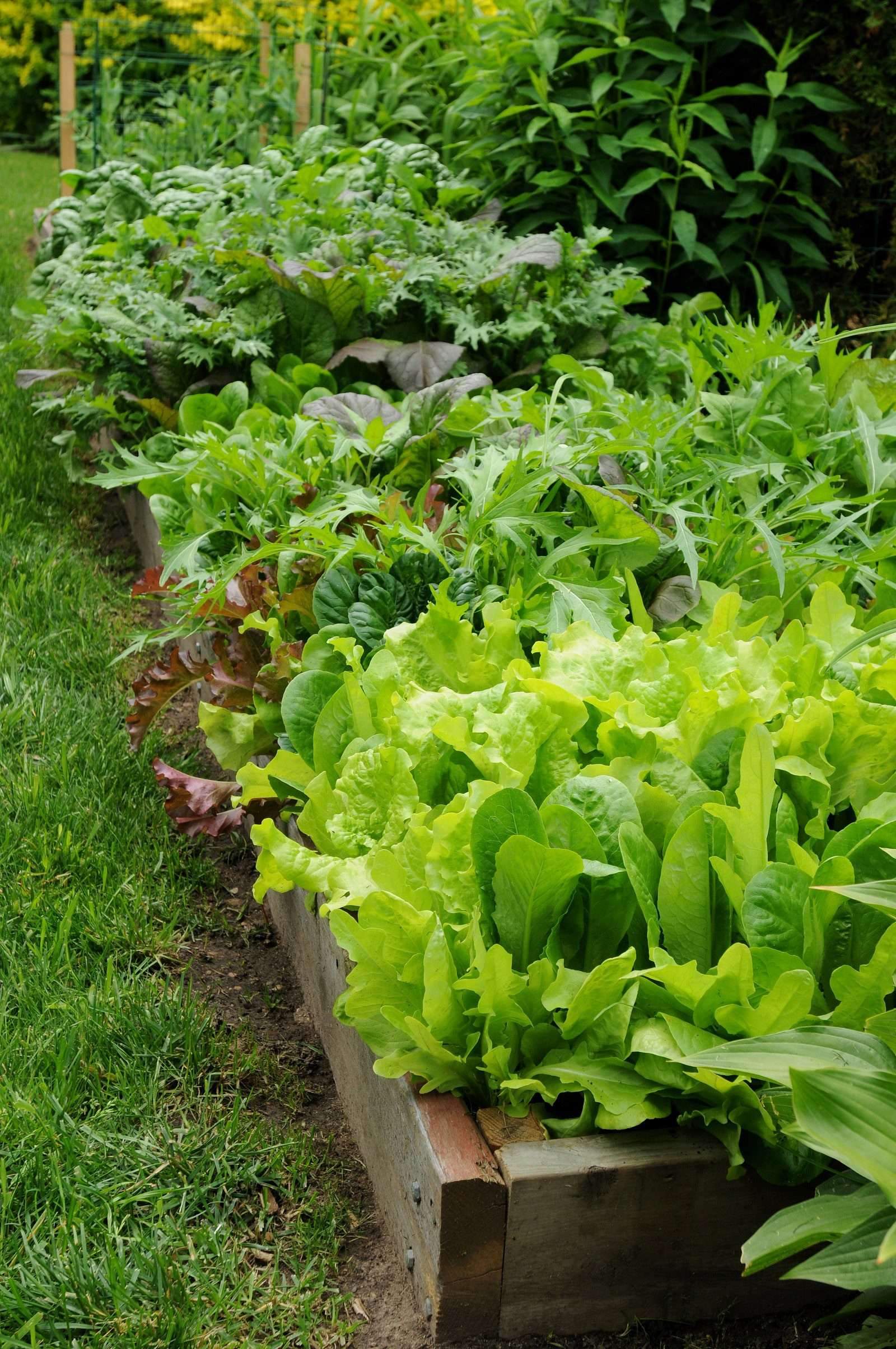A subset of raised bed gardening is called square foot gardening. This mathematical approach aims to grow more in less space. The basics of this technique include utilizing 4’ x 4’ raised beds that are sectioned into 12-inch squares. Within each of these squares crops are planted based on spacing guidance found on seed or vegetable-start packaging. So if your plant needs 12 inches, put one in each square; if your plant needs four inches, plant three in each square. The back portion of the boxed-grid can hold trellises for climbing crops like beans, melons, or cucumbers.
Bryn Bird, who is an expert in this approach, explains that square foot gardening is so productive due to the very specific mix of soil used: ⅓ compost, ⅓ peat moss, and ⅓ vermiculite. The compost provides a shot of fresh nutrients, the peat moss allows for better drainage so the roots can grow wider, and vermiculite expands to hold moisture so the plants get an even watering.
Like more traditional gardening, this layout can create a beautiful geometry. Bird describes one square foot garden she visited where the “boxes were turned so they looked diamond-shaped, colorful pebbles were laid between the aisles, and the grids were painted so it looked almost like a beautiful flower.” She favors square foot gardening for its ease, precision, and because it avoids rows that can easily get overgrown and unwieldy for the home gardener.
3. Foodscaping
Foodscaping incorporates edible plants into existing landscapes. Brie Arnold explains she started foodscaping because it looked normal enough to be “100% homeowner association approved.” Edible landscapes like this take advantage of traditional underutilized spaces like the beds abutting houses that are convenient to garden, as well as space between shrubs, trees, and perennials. “Landscapes that are predominantly shrubs and mulch aren’t that interesting to look at, so by using edible annuals, you can create really interesting color-texture combinations,” says Arnold.
She notes that banishing vegetables to the backyard is relatively new in our collective history, and encourages people to use their yards to their fullest potential. In this method, the existing landscape acts as the bones of the garden and the food crops are what Arnold calls “the seasonal shining stars.” Also, foodscaping doesn’t leave fallow beds to fill with weeds during winter months since ornamentals are active over multiple seasons. “I call [traditional raised beds] plant coffins because they’re ugly for a portion of the year, disrupting the design infrastructure,” says Arnold.
4. Non-living aesthetics
Non-living elements elevate a vegetable patch into something more. Art dots Michelle Fahmy’s landscape, which she refers to as a “little boutique backyard edible farm.” She has sculptures, hanging pots, as well as painted masks that poke out from her bougainvillea. Fountains and bird baths also add visual variety.
Janice Parker creates paths and space between raised beds out of crushed stone, mulch, or well-maintained grass. If you have a fence to keep critters out, she suggests a symmetrical one with a gate dead center. Fences don’t have to be dull—use this opportunity to grow flowering vines or food crops like peas. Parker also suggests the addition of a bench or other seating because “when you see a bench…[it] says ‘you’re welcome here.’”
The bottom line: There’s no one-size-fits-all approach when it comes to growing crops. Whether you sow an edible landscape throughout your yard, opt for raised beds, or map out a square foot garden, there is room to play and get creative with your vegetable garden layout.


 العربية
العربية